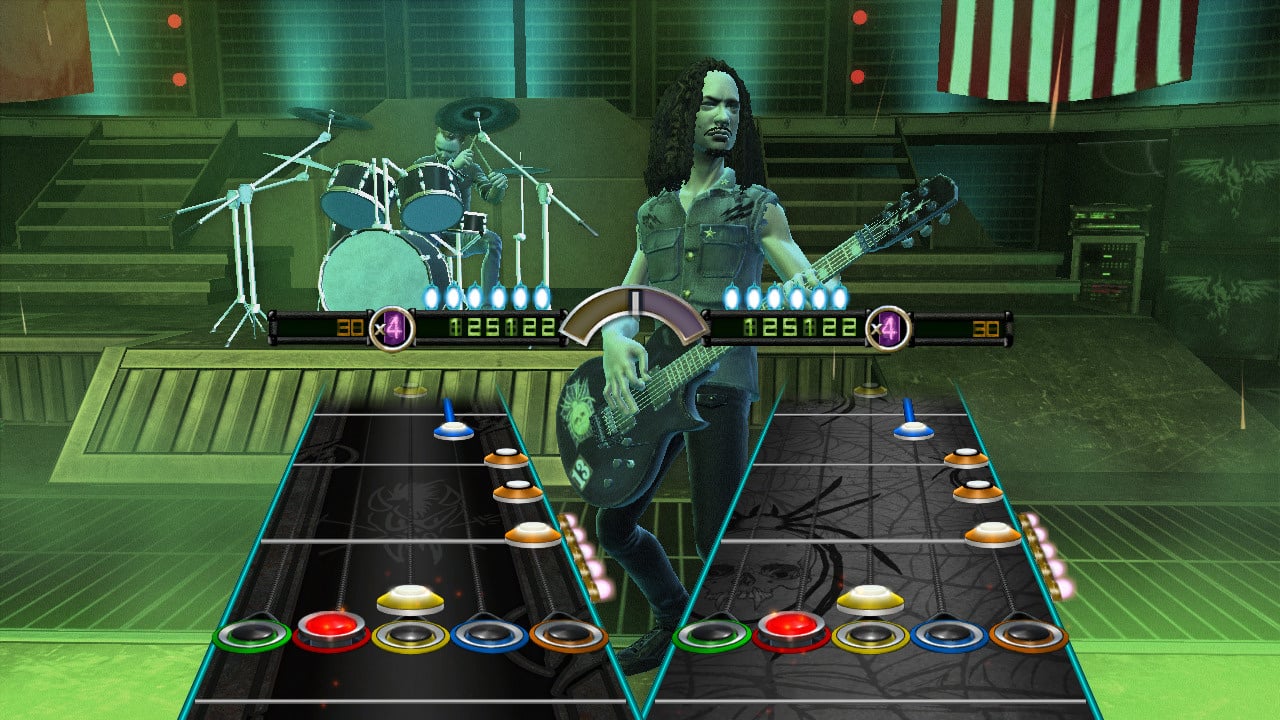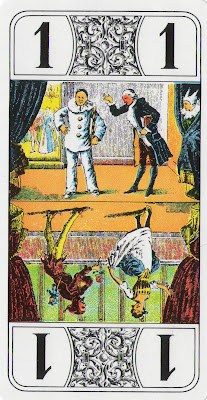Tarot cards were not created for "divination," but to play games. Some people dispute this, claiming that the trump cards of a tarot deck (called the "Major Arcana") can be traced back to Jewish Cabbalism or ancient Egyptian mysticism.
 |
| "Fool" (click to enlarge) |
This is the worst kind of pseudo-history, and yet another example of new agers inventing ancient "sources" for modern practices in order to give them a patina of credibility. There is no evidence at all that the Trumps were adapted for fortune-telling purposes before the 18th century, while the cards themselves date back at least several hundred years earlier. Any person or source that claims otherwise is just making things up.
That's not to say that the more familiar "Major Arcana" images used for the Trumps do not have an historical or philosophical aspect. Carl Jung wrote extensively about their meaning and relevance to analytical psychology, tying them to his theory of archetypes. Catholic mystic
Valentin Tomberg wrote an entire book,
Meditations on the Tarot, that used their symbols as a point of departure for a series of meditations on Christianity. This is because symbols have power, and the images used in the Major Arcana evolved from a Catholic culture that was rich in symbolism. The Major Arcana are clearly derived from a mixture of folklore, courtly culture, and Christianity, and thus offer a kind of cross-section of the secular and religious world of the 15th century.
The word "tarot" comes from the Italian version of the cards, which are called "tarocchi." This in turn may be a reference to the Taro River, or may be derived from an Arabic word. The decks vary from region to region, but the most common deck consists of 78 cards: four suits numbered 1 to 10, 4 court cards in each suit, 1 fool, and the 21 illustrated trump cards.
 |
| Valet and Dame (click to enlarge) |
These trumps, plus the fool, were later adapted as the "Major Arcana," but in gaming they function as permanent trump cards valued from 1 to 21. Our current standard decks dropped this trump suit, but kept the idea of assigning one of the standard suits as a "trump" for trick taking games.
Deck design can vary greatly, and as I begin rolling out a series on the French Tarot, you'll see just how the images were adapted for various times and cultures. The deck I plan to post is a standard Ducale French Tarot set, which are a complete departure from the more traditional Italian tarot. Based on the clothing and the utter lack of religious symbolism, these particular designs date from the 19th century or later. (Post-revolutionary France made a concerted effort to expunge religious symbolism from the culture. Oddly enough, they kept the courtly symbolism.)
Thus, the images on the Trumps are not the more familiar Arcana, but rather scenes taken from everyday life, showing peasants, laborers, members of the middle and upper classes, military, and typical bucolic scenes. I'm starting with the court cards today, but I'll post some art of the Trumps over the next few days.
 |
| Cavalier and King (click to enlarge) |








 Because my mind tends to run in fairly dark grooves, my first image when I heard the name Digits in a Box was a box full of fingers.
Because my mind tends to run in fairly dark grooves, my first image when I heard the name Digits in a Box was a box full of fingers. As if...
As if...







